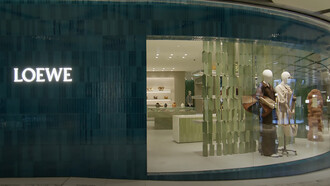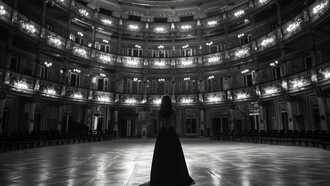Antonio Guzman Blanco (1829-1899) was the most “Francophile” of the Venezuelan presidents. He boosted the economic growth of the nation from 1870 until 1887 when he made his final departure to his beloved Paris. He always tried to make Venezuela a tropical France. One of his urbanistic achievements was the construction of the first iron bridge, Puente Hierro, in Caracas which linked the downtown area with the south of the city.
But it was president Cipriano Castro, his successor, who initiated the construction of a high class urbanization in the southern areas of the capital destined for the wealthy and the rulers of the country. The name of this exclusive place was El Paraiso (The Paradise). He started by constructing the main avenues and streets and built a mansion in 1903, he named it Villa Zoila after his wife. The mansion was designed by the renowned architect Alejandro Chataing. President Castro moved there until 1908 when he finally left for Europe like his predecessor Guzman Blanco. That presidential house had a structure for the garrison called La Planta, placed at its front. Later on, La Planta was converted into a jail and nowadays it is a Plaza. But Villa Zoila is still there almost intact, a beautiful classical mansion of a hundred years.
The first familiar houses of El Paraiso were designed by the architects Alberto Smith and Rafael Seijas Cook. The latter built the home of the famous Venezuelan-British family The Boulton’s, and they called their home El Palacete de las Acacias. Another interesting house in the area was built for Don Carlos Zuloaga, an entrepreneur who was the pioneer of the soft drinks and beers in Caracas. His home is special because it was made with an iron structure to be protected from the earthquakes so common in the northern region of Venezuela. It is tragic and funny to remember that president Cipriano Castro jump with an umbrella from a balcony and broke one of his legs during the quake of the year 1900.
During the 1920s and 30s, El Paraiso had a hippodrome where apart from the horse races, it was the place where the first flight was performed in Caracas. It even had a cockfight room built by the dictator Juan Vicente Gomez (1908-1935), and an athletic field and one of the first Baseball stadiums, called Los Samanes. Besides, gorgeous parks and ponds were set for the citizens to walk. A special square was Plaza Paéz which has a huge equestrian bronze statue of the great Llanero (Jose Antonio Paéz), one the founder fathers of Venezuela. Other squares are Plaza Madariaga and Petion. Nearby, the catholic French college, Saint Joseph de Tarbes, already existed.
More to the south of El Paraiso, there is a hill named El Pinar due to the casuarinas which grew all over the place. This was a hacienda of 75 hectares named La Vaquera, which was property of the dictator Gomez. He had a leisure house on the hill. Since he loved the wildlife he ordered to widen the installations for a zoo which is still there. The Pinar Zoo has lions, monkeys, birds, and even an interesting exhibition that includes an insectarium and butterfly garden which was designed in the 1990s by a friend of mine, the entomologist Jorge M. González.
One of the typical sculptures of Gomez’s times is La India de El Paraiso. It was made by the Venezuelan artist Eloy Palacios (1847-1919) who lived in Germany twice, the first time to study arts, and the second as a fugitive due to a problem with Guzman Blanco for a portrait he made of the president who did not like it. To create the face of the sculpture he was inspired by one of the daughters of the Prussian emperor in the year 1911.
As a personal memoir, I passed my youth in the early 1960s in El Paraiso near the German Club which is also still there. Many clubs remain, such as the Bascan and El Paraiso, now Hogar Canario. However, it does not have the splendor of the 40s and 50s when big parties were performed by the early local Jazz bands of the 1920s, who also included the best Merengue and Latin music of those times.
The glories of El Paraiso’s XX century have been dimming during the last three decades, as well as the whole Caracas and Venezuela. Hope no more, and a new revival comes. Now I lived again in there, near El Pinar, close to the Colegio San Agustin where is possible to see some of the old houses of the wealthy people of a hundred year ago.















